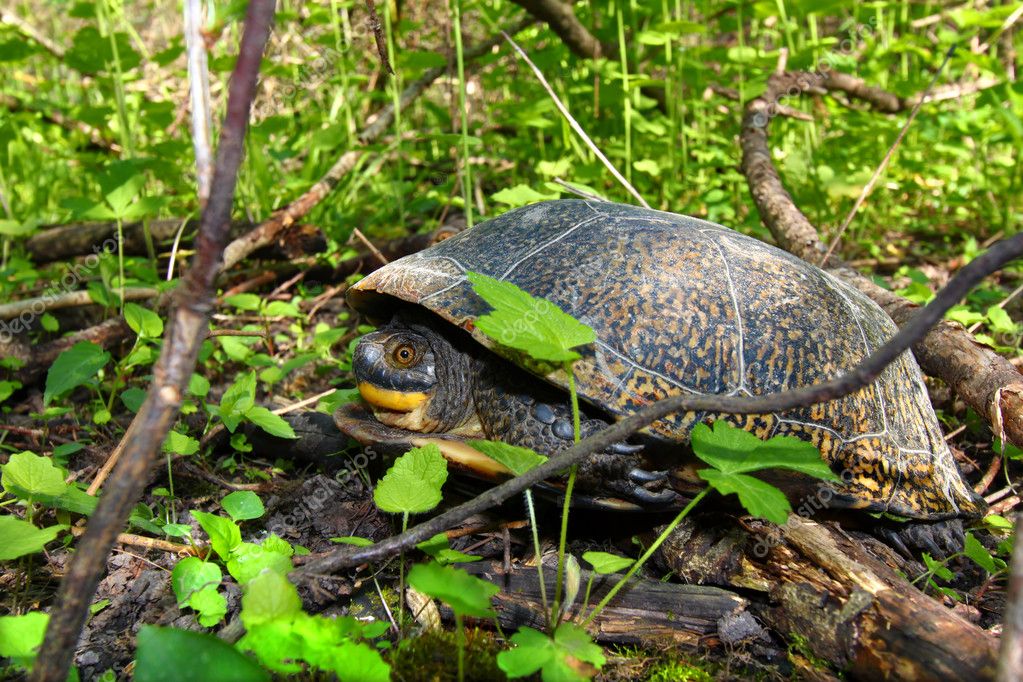ANIMAL: Blanding’s Turtle Emydoidea blandingii Type of Animal: Turtle Habitat: Lakes, ponds, wetlands, open grassland, coves, weedy bays, marshes, sandy uplands, rivers, streams, backwater pools, agricultural fields, fens, prairie marshes, oxbows, forests, swamps, lake inlets, woodlands, sloughs, roadsides, gravel pits, gardens, deep brooks, spring-fed floodplain pools, cobble beaches, vegetated areas in water Location(s): Found from C Nebraska & Minnesota eastward through S Ontario & S shore of Lake Erie as far east as N New York. Isolated populations in Dutchess County, New York, New England, & Nova Scotia. Appearance: Bright yellow chin/throat, carapace (upper shell) domed but slightly flattened along midline & speckled w/ numerous yellow/light flecks/streaks on dark background, plastron (bottom shell) yellow w/ symmetrical dark blotches, dark head/legs, often speckled/mottled w/ yellow, males have longer thicker tails. Food/Diet: Crayfish, insects, insect larvae, snails, leeches, fish, amphibians, carrion, aquatic plants, worms, berries, vegetables, shrimp, crabs, seeds, greens Status in Wild: Endangered Conservation: Breeding in zoos & aquariums, as well as reintroduction programs from captive-bred animals. Lifestyle: Found in groups of around 10 individuals Additional Info: Called: Male Female Young-Hatchling Group-Bale Weight: Male-3 lbs Female-2.8 lbs Gestation: 1.5-2.5 months Life Span: 70 years in wild, up to 80-100 years in captivity Body Length: Male-9-11 in Female-8-10 in Young-1.5 in Main predators of adults are otters, foxes, owls, coyotes, mink, raccoons, wolves, snapping turtles, & bobcats. Snakes, wading birds, skunks, large fish, frogs, & crows eat juveniles & hatchlings. Sexually mature at around 18 years. Breeding occurs between April & November, though less than half the females in population reproduce each year. Endangered due to habitat loss, water pollution, pet trade, development, slow reproductive rate, & road mortality. Like many reptiles, sex depends on incubation temperature. Hibernate from November-April, sometimes even starting in late October Lays 5-12 eggs per clutch. Fun Fact(s): Mouth shape makes it look like they’re always smiling. When disturbed, they pull in lobes of hinged plastron to partially close shell. They’re an indicator species-they reflect health of their habitat.
